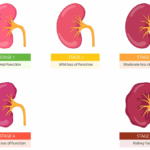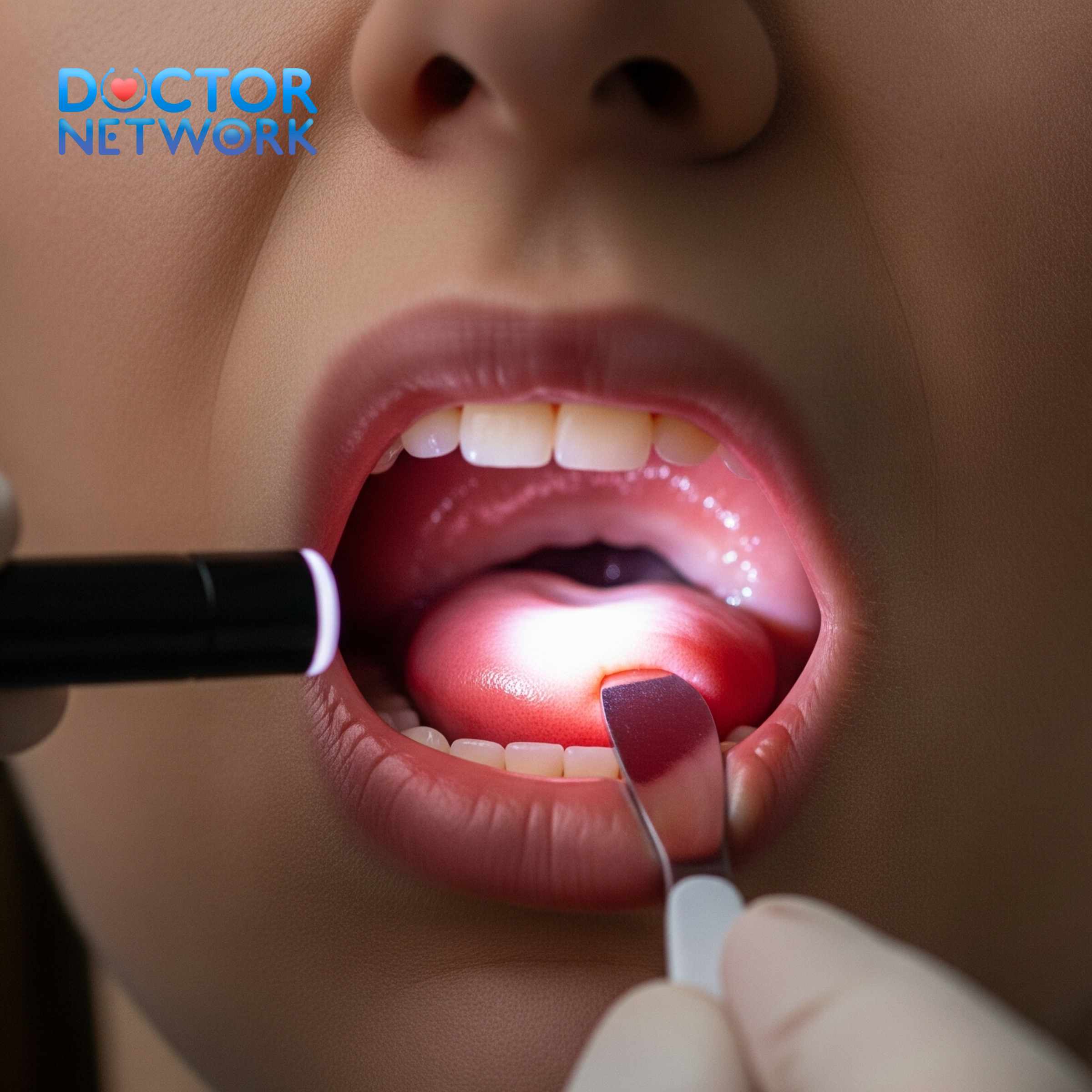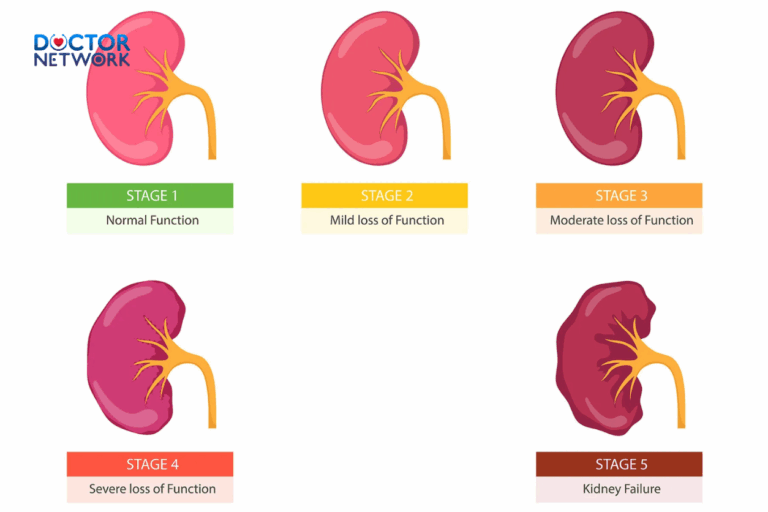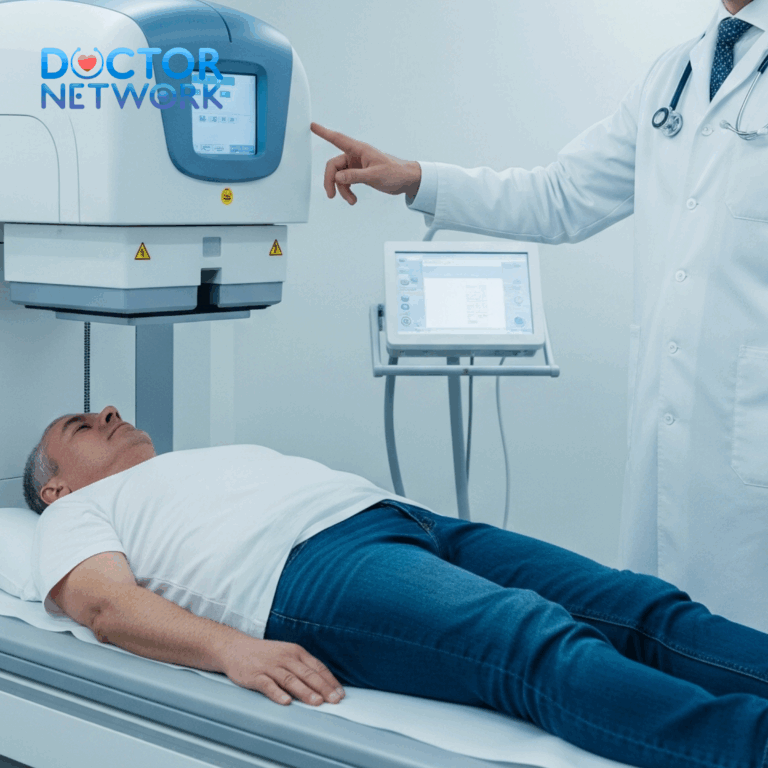Why Is Only My Left Leg Swelling? – When only your left leg swells while your right leg remains normal, this unilateral edema signals a localized problem requiring immediate medical attention. Leg swelling, medically termed edema, occurs when excess fluid accumulates in tissues, creating noticeable enlargement, heaviness, or tightness in the affected limb. Unlike bilateral swelling that affects both legs simultaneously and often indicates systemic conditions, single-leg swelling always points to a specific issue within that particular extremity. Why Is Only My Left Leg Swelling?
This comprehensive guide explores the urgent and chronic causes of left leg swelling, diagnostic approaches, treatment protocols, and critical warning signs that demand emergency care. We’ll examine why certain conditions like deep vein thrombosis favor the left leg, differentiate between life-threatening emergencies and manageable chronic conditions, and provide evidence-based management strategies. Understanding these distinctions can prevent serious complications including pulmonary embolism, chronic pain, mobility impairment, and in severe cases, limb loss.
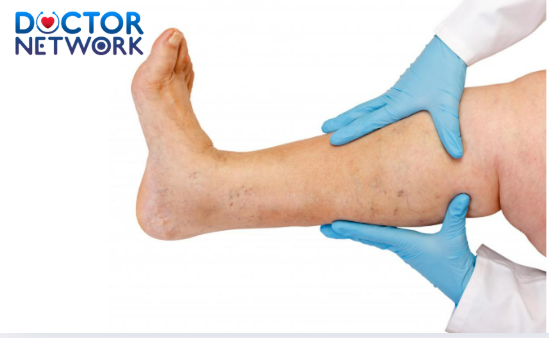
My Left Leg Swelling
Understanding Unilateral vs. Bilateral Swelling: Why Location Matters
Unilateral swelling affects only one leg and typically indicates localized pathology within that specific extremity, while bilateral swelling involves both legs and usually stems from systemic conditions affecting circulation or fluid balance. This fundamental distinction shapes diagnostic approaches and treatment strategies, as unilateral edema requires targeted interventions addressing the specific affected leg, whereas bilateral swelling demands broader systemic management.
Localized issues causing unilateral swelling include vascular obstructions, infections, lymphatic dysfunction, trauma, or masses within the affected limb. These conditions disrupt normal fluid dynamics specifically in that leg, creating the characteristic asymmetric appearance. Blood clots, cellulitis, lymphedema, and venous insufficiency exemplify common unilateral causes requiring focused treatment approaches.
Systemic conditions typically manifest as bilateral swelling but can occasionally present asymmetrically. Heart failure, kidney disease, liver dysfunction, and certain medications usually cause fluid retention in both legs. However, gravitational forces, positioning habits, or pre-existing vascular differences can cause one leg to swell more prominently than the other, even in systemic conditions.
| Swelling Type | Typical Causes | Treatment Approach | Urgency Level |
|---|---|---|---|
| Unilateral (One Leg) | DVT, Cellulitis, Lymphedema, Trauma | Targeted local treatment | Often urgent |
| Bilateral (Both Legs) | Heart failure, Kidney disease, Medications | Systemic management | Variable urgency |
| Asymmetric Bilateral | Systemic + local factors | Combined approach | Depends on cause |
Treatment strategies differ significantly between unilateral and bilateral presentations. Unilateral swelling often requires specific interventions like anticoagulation for blood clots, antibiotics for infections, or compression therapy for lymphatic dysfunction. Bilateral swelling management focuses on addressing underlying systemic conditions through cardiac medications, diuretics, dietary modifications, or treating organ dysfunction.
Why the Left Leg Specifically? Anatomical and Statistical Considerations
The left leg experiences certain conditions more frequently than the right due to anatomical variations and hemodynamic factors that create preferential conditions for specific pathologies. Deep vein thrombosis occurs more commonly in the left leg, particularly when involving the iliofemoral venous system, due to anatomical compression points and flow dynamics that favor clot formation on the left side.
Lymphedema frequently demonstrates asymmetric presentation, with one leg affected more severely than the other, though either side can be involved. This asymmetry results from variations in lymphatic drainage patterns, previous trauma, surgical interventions, or infections that preferentially impact one side’s lymphatic system functionality.
Sudden onset left leg swelling warrants particular attention due to the higher probability of serious vascular events. The left common iliac vein’s anatomical position creates compression points that predispose to thrombotic events, making acute left leg swelling a red flag symptom requiring immediate evaluation. While right leg involvement certainly occurs, the statistical preponderance of left-sided deep vein thrombosis makes left leg symptoms particularly concerning.
Chronic venous insufficiency can also demonstrate left-sided predominance in certain individuals due to anatomical variations in venous anatomy, previous trauma, or genetic factors affecting valve function. These variations create preferential conditions for venous stasis and subsequent edema formation in the left extremity.
Common Causes of Swelling in Only One Leg
Urgent Causes Requiring Immediate Medical Attention
Deep Vein Thrombosis (DVT) represents the most serious cause of acute unilateral leg swelling, occurring when blood clots form in deep venous structures and obstruct normal circulation. This life-threatening condition can cause sudden swelling, throbbing pain, skin warmth, redness or darkening, and prominent superficial veins. Importantly, DVT sometimes presents without pain, making the absence of discomfort unreliable for ruling out this dangerous condition.
The distinction between superficial vein thrombosis and deep vein thrombosis carries significant prognostic implications. Superficial clots typically cause less long-term harm and rarely lead to pulmonary embolism, while deep vein clots pose substantial risks for embolization to the lungs and chronic venous insufficiency. Delayed treatment of DVT significantly worsens outcomes, making rapid diagnosis and anticoagulation critical for preventing potentially fatal complications.
Ruptured Baker’s Cyst occurs when fluid-filled sacs behind the knee burst, causing acute pain and calf swelling as synovial fluid flows down the leg. This condition frequently mimics DVT symptoms, requiring ultrasound evaluation to differentiate between these conditions. The sudden onset of posterior knee pain followed by calf swelling characterizes this condition, which demands urgent ultrasound evaluation to exclude concurrent DVT.
Intramuscular Bleeding can range from minor hematomas to life-threatening hemorrhages, particularly in the thigh where large volumes of blood can accumulate. Spontaneous bleeding may occur in patients taking anticoagulants or following invasive procedures like cardiac catheterization. Even smaller bleeds can present as ankle swelling, while major hemorrhages can cause hemodynamic instability requiring emergency intervention.
Acute Joint Inflammation involves swollen, hot, red joints that can mimic vascular pathology. Gout attacks frequently cause painful ankle swelling resembling blood clot symptoms, requiring careful differentiation through clinical evaluation and imaging studies. Septic arthritis represents a medical emergency requiring immediate diagnosis and treatment to prevent joint destruction and systemic sepsis.
Cellulitis constitutes a bacterial infection of skin and deeper tissues that appears particularly dangerous in immunocompromised patients or those with pre-existing lymphedema. This condition manifests as red, hot, painful, swollen skin, often with fever as the initial symptom. Early recognition and antibiotic treatment prevent serious complications including sepsis, necrotizing fasciitis, and chronic lymphatic damage.
Tendon Rupture causes localized swelling around the injury site, commonly affecting the Achilles tendon with swelling in the lower calf and ankle region. These injuries typically produce a characteristic “popping” sound followed by sharp pain and immediate swelling. Anterior cruciate ligament tears cause knee and calf swelling, requiring immediate orthopedic evaluation.
Chronic Causes of Persistent Left Leg Swelling
Lymphedema results from lymphatic system damage or blockage, causing lymphatic fluid accumulation and progressive swelling. Primary lymphedema stems from congenital abnormalities often affecting both legs, while secondary lymphedema typically affects one leg more severely following surgery, radiation therapy, infection, or trauma. This condition manifests as persistent swelling, heaviness, tightness, restricted range of motion, and aching discomfort.
Advanced lymphedema causes skin hardening and thickening, creating a characteristic “tree trunk” appearance of the affected limb. Early diagnosis and comprehensive treatment help manage symptoms and prevent progression to severe stages. Neglecting lymphedema leads to worsening swelling, irreversible skin changes, and increased infection risk, making prompt recognition and management essential.
Chronic Venous Insufficiency (CVI) occurs when venous valves malfunction, impeding blood return to the heart and causing fluid pooling with increased venous pressure. This condition often affects one leg more than the other, presenting as lower leg and ankle edema with or without visible varicose veins. Symptoms include swelling, aching, leg fatigue, skin discoloration, and in severe cases, venous leg ulcers.
The swelling and discomfort associated with CVI typically worsen after prolonged sitting or standing, improving with elevation and movement. Severe cases develop characteristic skin changes including hyperpigmentation, lipodermatosclerosis, and ultimately venous stasis ulcers that serve as markers of advanced disease requiring aggressive management.
Arteriovenous Fistula creates abnormal connections between arteries and veins, whether congenital, traumatic, or iatrogenic following procedures like cardiac catheterization. These connections elevate venous pressure due to direct arterial inflow, potentially causing swelling in the affected extremity. The high-pressure arterial blood directly entering the venous system disrupts normal hemodynamics and can lead to progressive venous dilation and edema.
Masses and Tumors affecting muscles, bones, or soft tissues can cause localized swelling or make one leg appear larger than the other. Both benign and malignant masses can compress vascular or lymphatic structures, impeding normal fluid drainage and causing secondary swelling. Primary bone cancers, soft tissue sarcomas, and metastatic lesions can all present with unilateral leg swelling as an initial symptom.
Hemihypertrophy represents disproportionate growth of one body part compared to its counterpart, causing chronic size discrepancy between legs. This condition typically develops gradually rather than appearing suddenly and may occur as part of genetic syndromes like Klippel-Trenaunay syndrome. The size difference remains stable over time unless associated with progressive vascular malformations.
Systemic Causes Occasionally Presenting Unilaterally
Systemic fluid retention from heart failure, kidney disease, or liver dysfunction typically causes bilateral leg swelling but can occasionally present asymmetrically due to gravitational effects, positioning habits, or pre-existing vascular differences. These conditions should always be considered even when only one leg appears swollen, as early systemic disease can manifest with subtle asymmetric presentations before progressing to obvious bilateral involvement.
Idiopathic Cyclic Edema affects some women with recurrent unilateral leg swelling coinciding with menstrual cycles. This hormonal-related condition typically involves fluid retention that fluctuates with hormonal changes, often affecting one leg more prominently than the other without clear anatomical explanation.
Additional Contributing Factors
Several other conditions can contribute to unilateral leg swelling:
- Severe Arthritis affecting knee or ankle joints can cause significant painful swelling
- Trauma and Injury including fractures, contusions, or insect bites cause temporary localized swelling through inflammatory responses
- Medication Side Effects from NSAIDs, hormone therapy, diabetes medications, antihypertensives, or chemotherapy agents
- Obesity creating increased pressure on lymphatic and venous systems
- Prolonged Immobility from sitting or standing causing fluid accumulation
- Peripheral Artery Disease reducing arterial inflow and increasing fluid retention
- Varicose Veins causing venous pooling and localized swelling
| Cause Category | Examples | Onset | Associated Symptoms |
|---|---|---|---|
| Urgent Vascular | DVT, PE risk | Sudden | Pain, warmth, redness |
| Urgent Infectious | Cellulitis | Rapid | Fever, redness, heat |
| Chronic Lymphatic | Lymphedema | Gradual | Heaviness, skin changes |
| Chronic Venous | CVI, Varicose veins | Progressive | Aching, skin discoloration |
Diagnostic Approach to Left Leg Swelling
The diagnostic evaluation begins with a comprehensive patient history focusing on symptom onset, associated symptoms, medical history, medications, and recent procedures or trauma. Acute onset swelling raises immediate concern for serious conditions like DVT or infection, while gradual progression suggests chronic conditions like lymphedema or venous insufficiency.
Physical examination can be diagnostic in many cases, with experienced clinicians recognizing characteristic findings of lymphedema, cellulitis, or chronic venous insufficiency through inspection and palpation. The examination includes assessment of skin temperature, color changes, pitting versus non-pitting edema, pulse examination, and lymph node evaluation.
Imaging Studies
Ultrasound serves as the initial imaging modality for most cases of unilateral leg swelling due to its non-invasive nature and high diagnostic accuracy for vascular conditions. Duplex ultrasound effectively detects deep vein thrombosis, evaluates venous valve function, and assesses arterial flow. Patients should refrain from smoking before ultrasound examinations as nicotine causes vasoconstriction that can affect test accuracy.
CT and MRI provide detailed anatomical information when initial ultrasound proves inconclusive or when soft tissue masses are suspected. These cross-sectional imaging modalities excel at detecting tumors, hematomas, abscesses, or other structural abnormalities causing secondary swelling.
Specialized Testing
Lymphoscintigraphy represents the gold standard for diagnosing lymphedema when clinical findings remain unclear. This nuclear medicine study traces radioactive tracers through the lymphatic system, identifying areas of obstruction or dysfunction that explain swelling patterns.
Peripheral Angiography evaluates arterial circulation when peripheral artery disease is suspected as a contributing factor. This procedure uses contrast dye and X-ray imaging to identify narrowed or blocked arteries that might impair circulation and contribute to fluid retention.
Blood Tests assess clotting function, inflammatory markers, kidney and liver function, and cardiac biomarkers to identify systemic conditions contributing to swelling. D-dimer levels can support DVT diagnosis but require correlation with clinical findings and imaging studies.
Rarely, invasive testing becomes necessary when standard diagnostic approaches fail to identify the cause of persistent unilateral swelling. These procedures might include venography, lymphangiography, or tissue biopsy depending on clinical suspicions.
Treatment Options for Left Leg Swelling
Treatment strategies depend entirely on the underlying cause, with some conditions requiring urgent intervention while others benefit from conservative management approaches. Urgent conditions like DVT demand immediate anticoagulation, while chronic conditions like lymphedema respond to comprehensive conservative therapies.
Emergency Treatments
Anticoagulation forms the cornerstone of DVT treatment, with immediate initiation of blood-thinning medications preventing clot propagation and reducing pulmonary embolism risk. Treatment typically involves initial parenteral anticoagulation followed by oral anticoagulants for several months.
Antibiotic Therapy for cellulitis requires prompt initiation to prevent progression to severe soft tissue infection or sepsis. The choice of antibiotics depends on suspected pathogens and patient risk factors, with severe cases requiring intravenous administration.
Surgical Intervention may be necessary for conditions like ruptured tendons, compartment syndrome, or severe infections requiring drainage or debridement.
Conservative Management Strategies
RICE Protocol (Rest, Ice, Compression, Elevation) provides effective initial management for minor swelling or injury-related edema. Elevating the affected leg above heart level helps gravity assist fluid drainage, while compression prevents further fluid accumulation.
Compression Therapy using graduated compression stockings or bandages represents a fundamental treatment for various causes of leg swelling. Proper compression encourages fluid flow and prevents stagnation, particularly beneficial for venous insufficiency and lymphedema.
Exercise Programs stimulate lymphatic flow and improve circulation, reducing swelling and discomfort especially in lymphedema patients. Low-impact activities like walking, swimming, or yoga provide optimal benefits without excessive strain on affected tissues.
Manual Lymphatic Drainage (MLD) involves specialized massage techniques that stimulate lymphatic fluid movement in lymphedema patients. This therapy requires training by certified therapists and forms part of comprehensive lymphedema management.
Complete Decongestive Therapy (CDT) combines manual lymphatic drainage, compression therapy, exercise, and meticulous skin care for comprehensive lymphedema treatment. This multifaceted approach addresses all aspects of lymphatic dysfunction and provides optimal outcomes for chronic lymphedema.
Medical Interventions
Various medical procedures address specific underlying conditions:
- Angioplasty for peripheral artery disease or venous obstructions
- Thrombolytic therapy for acute blood clots
- Sclerotherapy or endovenous thermal ablation for varicose veins
- Surgical lymphatic reconstruction for severe lymphedema
Medication Adjustments may be necessary if current medications contribute to swelling, requiring collaboration with prescribing physicians to find alternative treatments that don’t cause fluid retention.
Long-term Management
Chronic conditions require ongoing management combining lifestyle modifications, regular medical monitoring, and adherence to prescribed treatments. Regular follow-up appointments allow healthcare providers to monitor disease progression and adjust treatments as needed.
Lifestyle Modifications include:
- Maintaining healthy weight to reduce lymphatic and venous strain
- Following low-sodium diets to minimize fluid retention
- Avoiding prolonged sitting or standing
- Performing regular leg elevation
- Implementing proper skin care routines
| Treatment Category | Specific Interventions | Best For | Expected Timeline |
|---|---|---|---|
| Emergency | Anticoagulation, Antibiotics | DVT, Cellulitis | Hours to days |
| Conservative | Compression, Elevation, Exercise | CVI, Lymphedema | Weeks to months |
| Procedural | Angioplasty, Sclerotherapy | PAD, Varicose veins | Days to weeks |
| Surgical | Lymphatic reconstruction | Severe lymphedema | Months to years |
When to Seek Medical Attention
Any unexplained leg swelling warrants medical evaluation, as seemingly minor swelling can indicate serious underlying conditions requiring immediate treatment. The timing and urgency of medical care depend on associated symptoms and swelling characteristics.
Emergency Situations Requiring Immediate Care
Seek emergency medical attention immediately for these warning signs:
- Sudden, severe swelling in one leg, especially with pain, warmth, or redness
- Swelling accompanied by chest pain, difficulty breathing, fainting, or dizziness
- Signs of infection including fever, spreading redness, warmth, or purulent drainage
- Swelling following trauma or accident
- Swelling that appears suddenly without apparent cause
Pulmonary Embolism represents a life-threatening emergency occurring when blood clots travel from leg veins to the lungs. Symptoms include sudden shortness of breath, chest pain, rapid heart rate, and sometimes coughing up blood. This condition requires immediate emergency care as delays can be fatal.
Non-Emergency but Urgent Situations
Schedule prompt medical evaluation within 24-48 hours for:
- New onset swelling without emergency symptoms
- Chronic swelling that suddenly worsens
- Swelling that doesn’t improve with elevation and rest
- Skin changes or ulcers developing around swollen areas
- Increasing pain or functional impairment
Specialist Referrals
Primary care physicians may recommend specialist consultations based on suspected diagnoses:
- Vascular surgeons for suspected DVT or chronic venous insufficiency
- Certified lymphedema therapists for lymphatic dysfunction
- Orthopedic surgeons for trauma-related swelling
- Oncologists if malignancy is suspected
Regular follow-up with healthcare providers ensures proper monitoring of chronic conditions and timely intervention for complications.
Prevention Strategies for Leg Swelling
Prevention focuses on maintaining healthy circulation and avoiding known risk factors for conditions causing unilateral leg swelling. These strategies prove particularly important for individuals with risk factors like previous DVT, family history of vascular disease, or occupations requiring prolonged immobility.
Regular Physical Activity maintains healthy circulation and lymphatic flow, reducing the risk of fluid accumulation. Walking, cycling, swimming, and other aerobic activities strengthen the muscle pump mechanism that assists venous return and lymphatic drainage.
Mobility Breaks during long periods of sitting or standing prevent venous stasis that contributes to swelling. Taking brief walks every hour, performing ankle pumps, or changing positions helps maintain circulation and prevents fluid accumulation.
Proper Hydration maintains optimal blood viscosity and supports healthy circulation. Adequate fluid intake prevents blood from becoming too concentrated, reducing the risk of clot formation while supporting normal lymphatic function.
Weight Management reduces pressure on lymphatic and venous systems, decreasing the risk of developing chronic swelling conditions. Maintaining healthy body weight also reduces the risk of developing conditions like diabetes and heart disease that can contribute to leg swelling.
Risk Factor Modification includes smoking cessation, blood pressure control, diabetes management, and cholesterol control. These measures reduce the risk of developing peripheral artery disease and other vascular conditions that contribute to leg swelling.
Travel Precautions during long flights or car trips include wearing compression stockings, performing leg exercises, staying hydrated, and taking mobility breaks to prevent travel-related DVT.
Complications of Untreated Leg Swelling
Ignoring unilateral leg swelling can lead to serious complications ranging from chronic discomfort to life-threatening emergencies. The severity of complications depends on the underlying cause and duration of neglect.
Acute Complications from untreated urgent conditions can be catastrophic:
- Pulmonary embolism from untreated DVT can cause sudden death
- Sepsis from untreated cellulitis can lead to organ failure and death
- Compartment syndrome from severe swelling can cause muscle death and limb loss
- Chronic pain syndromes from delayed treatment of treatable conditions
Chronic Complications develop gradually but significantly impact quality of life:
- Progressive lymphedema leading to permanent limb deformity and disability
- Chronic venous insufficiency causing skin ulcers that resist healing
- Functional impairment limiting mobility and daily activities
- Psychological impact from chronic pain, disfigurement, and disability
Skin Complications frequently develop in neglected cases:
- Chronic skin changes including hyperpigmentation and thickening
- Recurrent infections due to compromised skin integrity
- Non-healing ulcers requiring aggressive wound care
- Cellulitis episodes becoming more frequent and severe
Quality of Life Impact includes:
- Chronic pain and discomfort affecting daily activities
- Mobility limitations impacting independence
- Social isolation due to appearance concerns
- Economic burden from ongoing medical care
Early intervention prevents most complications and provides optimal outcomes for virtually all causes of unilateral leg swelling.
Conclusion
Unilateral leg swelling, particularly affecting only the left leg, represents an abnormal condition that always requires medical evaluation and never should be dismissed as normal aging or minor inconvenience. The wide spectrum of potential causes ranges from life-threatening emergencies like deep vein thrombosis to manageable chronic conditions like lymphedema, each requiring specific diagnostic approaches and treatment strategies.
The key to optimal outcomes lies in prompt recognition of warning signs, appropriate diagnostic evaluation, and timely initiation of cause-specific treatments. Understanding the differences between urgent conditions requiring immediate emergency care and chronic conditions suitable for outpatient management can literally mean the difference between life and death or between normal function and permanent disability.
Modern diagnostic techniques including ultrasound, advanced imaging, and specialized testing allow accurate diagnosis of virtually all causes of unilateral leg swelling. Treatment options have expanded significantly, offering effective interventions for conditions previously considered untreatable. However, these advances only benefit patients who seek appropriate medical care before complications develop.
The message remains clear: any unexplained swelling in one leg warrants medical evaluation. Early diagnosis and appropriate treatment prevent complications, preserve function, and maintain quality of life. Don’t wait for swelling to worsen or additional symptoms to develop – seek medical attention promptly to identify and address the underlying cause before serious complications occur.
Here are the 5 most frequently asked questions about “Why is only my left leg swelling?” along with expert answers based on current medical understanding:
1. Why is only my left leg swelling and not the right?
Unilateral swelling of the left leg is often caused by localized issues such as deep vein thrombosis (DVT), where a blood clot blocks a deep vein, or May-Thurner syndrome, a condition in which the right iliac artery compresses the left iliac vein, restricting blood flow and causing swelling. Other causes include lymphatic obstruction, infections, or trauma affecting only one leg.
2. What are the most common medical causes of swelling in only one leg?
The primary medical causes include:
Deep Vein Thrombosis (DVT): A blood clot in a deep vein causing pain, redness, and swelling.
Chronic Venous Insufficiency: Poor vein function leading to blood pooling and swelling.
Lymphedema: Blockage or damage to lymphatic vessels causing fluid buildup.
Infections: Such as cellulitis causing inflammation and swelling.
May-Thurner Syndrome: Compression of the left iliac vein by the right iliac artery13567.
3. How can I tell if the swelling is serious and needs urgent medical attention?
Swelling accompanied by pain, redness, warmth, and sudden onset may indicate DVT, which is a medical emergency due to the risk of pulmonary embolism. Other warning signs include skin discoloration, fever (suggesting infection), or swelling that worsens rapidly. Immediate medical evaluation is essential in these cases17.
4. Can lifestyle or external factors cause swelling in only one leg?
Yes. Prolonged sitting or standing, wearing tight clothing or shoes that restrict circulation, and pregnancy (due to uterine pressure on pelvic veins) can cause temporary unilateral leg swelling. However, these usually resolve with changes in position or activity57.
5. What diagnostic steps are taken to determine the cause of swelling in one leg?
Doctors typically start with a detailed medical history and physical examination, then order imaging tests such as Doppler ultrasound to detect blood clots or venous insufficiency. In some cases, further tests like lymphoscintigraphy or CT scans may be needed to assess lymphatic obstruction or vascular compression (e.g., May-Thurner syndrome)
Here are some common reasons for left leg swelling, along with related scientific evidence and studies.
Important Disclaimer: This information is for educational purposes only and is NOT a substitute for professional medical advice, diagnosis, or treatment. Always seek the advice of your physician or other qualified health provider with any questions you may have regarding a medical condition.
Here are some potential causes and related research:
Deep Vein Thrombosis (DVT)
Description: A blood clot forms in one of the deep veins, usually in the leg. This is a serious condition as the clot can break loose and travel to the lungs (pulmonary embolism). Unilateral swelling is a hallmark symptom.
Evidence/Study: The Wells score is a widely used clinical decision rule to estimate the probability of DVT.
Source: Wells PS, Anderson DR, Rodger M, et al. “Derivation of a simple clinical model to categorize patients probability of deep vein thrombosis: increasing the models utility with the SimpliRED D-dimer.”
Journal: Thrombosis and Haemostasis, 2000; 83(3):416-20.
Link (PubMed): https://pubmed.ncbi.nlm.nih.gov/10744147/
Relevance: This paper (and subsequent validations) established a clinical prediction rule that includes unilateral leg swelling as a key indicator for DVT.
May-Thurner Syndrome (Iliac Vein Compression Syndrome)
Description: This occurs when the right common iliac artery compresses the left common iliac vein against the lumbar spine. This compression can impede blood flow from the left leg, leading to swelling, pain, and an increased risk of DVT specifically in the left leg.
Evidence/Study: Reviews and case series highlight the predisposition for left-sided symptoms.
Source: Mousa, A. Y., & AbuRahma, A. F. “May-Thurner syndrome: update and review.”
Journal: Annals of Vascular Surgery, 2013; 27(7), 984–995.
Link (PubMed): https://pubmed.ncbi.nlm.nih.gov/23850313/
Relevance: This review discusses the pathophysiology, diagnosis, and treatment of May-Thurner syndrome, emphasizing its role in left-sided venous outflow obstruction.
Original Description:
Source: May R, Thurner J. “The cause of the predominantly sinistral occurrence of thrombosis of the pelvic veins.”
Journal: Angiology, 1957; 8(5):419-27.
Link (Abstract, if available): https://journals.sagepub.com/doi/10.1177/000331975700800505 (Full text may be behind a paywall)
Relevance: This is the seminal paper that first described the anatomical basis for predominantly left-sided iliac vein thrombosis.
Lymphedema
Description: Swelling caused by a buildup of lymph fluid due to a damaged or blocked lymphatic system. It can be primary (congenital) or secondary (due to infection, injury, surgery, or radiation therapy, especially for cancer). It often starts unilaterally.
Evidence/Study: Consensus documents outline diagnosis and management.
Source: International Society of Lymphology. “The Diagnosis and Treatment of Peripheral Lymphedema: 2020 Consensus Document of the International Society of Lymphology.”
Journal: Lymphology, 2020; 53(1): 3-19.
Link (Often found via ISL website or direct search): https://www.ufrgs.br/feridas/wp-content/uploads/2020/07/ISL-Consensus-Document-2020.pdf
Relevance: This document provides comprehensive guidelines from experts on lymphedema, which commonly presents as unilateral swelling.
Cellulitis
Description: A bacterial infection of the skin and underlying tissues. It typically affects one leg and causes redness, warmth, pain, and swelling.
Evidence/Study: Clinical practice guidelines for skin and soft tissue infections.
Source: Stevens DL, Bisno AL, Chambers HF, et al. “Practice Guidelines for the Diagnosis and Management of Skin and Soft Tissue Infections: 2014 Update by the Infectious Diseases Society of America.”
Journal: Clinical Infectious Diseases, 2014; 59(2): e10-e52.
Link (PubMed): https://pubmed.ncbi.nlm.nih.gov/24947530/
Relevance: These guidelines detail the diagnosis and management of cellulitis, a common cause of unilateral leg swelling accompanied by signs of infection.
Chronic Venous Insufficiency (CVI)
Description: Occurs when the leg veins don’t allow blood to flow back up to the heart efficiently. While it can affect both legs, it might start or be more severe in one leg initially. Symptoms include swelling, aching, varicose veins, and skin changes.
Evidence/Study: Review articles on pathophysiology and management.
Source: Eberhardt, R. T., & Raffetto, J. D. “Chronic venous insufficiency.”
Journal: Circulation, 2014; 130(4), 333–346.
Link (AHA Journals): https://www.ahajournals.org/doi/10.1161/CIRCULATIONAHA.113.006898
Relevance: This comprehensive review covers CVI, which can manifest as unilateral or asymmetric leg swelling.
Baker’s Cyst (Popliteal Cyst)
Description: A fluid-filled sac that forms behind the knee, often due to an underlying knee problem like arthritis or a cartilage tear. If the cyst is large or ruptures, it can cause swelling and pain in the calf of the affected leg, mimicking DVT.
Evidence/Study: Clinical reviews discussing diagnosis and treatment.
Source: Frush, T. J., & Noyes, F. R. “Baker’s Cyst: Diagnostic and Surgical Considerations.”
Journal: Sports Health, 2015; 7(4), 359–365.
Link (PubMed Central): https://www.ncbi.nlm.nih.gov/pmc/articles/PMC4481672/
Relevance: This article discusses Baker’s cysts, a common cause of unilateral posterior knee and calf swelling.
Musculoskeletal Injury
Description: Sprains, strains, fractures, or muscle tears can cause localized swelling in the affected leg.
Evidence/Study: Specific studies would depend on the type of injury. General orthopedic literature supports inflammation and swelling as a response to trauma.
Source: For example, a textbook like “Rockwood and Green’s Fractures in Adults” or “DeLee, Drez, & Miller’s Orthopaedic Sports Medicine.”
Relevance: These texts detail the body’s response to various musculoskeletal injuries, including localized swelling. Direct links to specific pages are difficult without knowing the exact injury.
Kiểm Duyệt Nội Dung
More than 10 years of marketing communications experience in the medical and health field.
Successfully deployed marketing communication activities, content development and social networking channels for hospital partners, clinics, doctors and medical professionals across the country.
More than 6 years of experience in organizing and producing leading prestigious medical programs in Vietnam, in collaboration with Ho Chi Minh City Television (HTV). Typical programs include Nhật Ký Blouse Trắng, Bác Sĩ Nói Gì, Alo Bác Sĩ Nghe, Nhật Ký Hạnh Phúc, Vui Khỏe Cùng Con, Bác Sỹ Mẹ, v.v.
Comprehensive cooperation with hundreds of hospitals and clinics, thousands of doctors and medical experts to join hands in building a medical content and service platform on the Doctor Network application.











